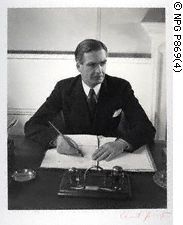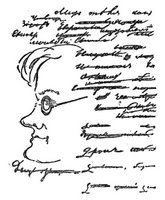"ONE BELT, ONE ROAD": ILLUSION OR REALITY?
"There is a shorthand among foreign policy types that designates the 20th as the Atlantic century. The 21st, the received wisdom continues, will belong to the Pacific. The last century saw wealth and power concentrated among the littoral states of the north Atlantic as Europe and the US reached across the ocean. But prosperity and power have travelled eastward and southwards. The phrase Pacific century seems to capture China’s rise.
Only in part. True, the People’s Liberation Army is building military bases on reclaimed islands in the South China sea to expand its maritime reach into the Western Pacific; and, yes, China could well clash with the US in these waters. But such tensions misread Beijing’s organising ambition. It is looking westwards rather than eastward.
Mr Xi’s big play is wrapped up in his “One Belt, One Road” idea — the recreation of the sea and land routes of an earlier age of globalisation. When it looks ahead China imagines an era in which the great land mass of Eurasia becomes the vital fulcrum of global power. And guess who will be the pivotal Eurasian player?
Zbigniew Brzezinski, the former national security adviser to president Jimmy Carter who until his death this year was Washington’s sharpest strategic thinker, long ago grasped the significance of what he called the “axial supercontinent”. “A power that dominated Eurasia”, he wrote as far back as 1997, “would exercise decisive influence over two of the world’s three most economically productive regions, western Europe and East Asia . . . What happens with the distribution of power on the Eurasian landmass will be of decisive importance to America’s global primacy and historical legacy'".
Philip Stephens, "A train that proclaims China’s global ambition". The Financial Times. 20 July 2017, in www.ft.com.
"On October 24, 2017, the Communist Party of China (CPC) adopted a new version of the Party Constitution. Along with the name of Secretary General Xi Jinping, the constitution now includes the One Belt One Road (OBOR) concept — Xi’s trademark geo-economic concept that is now used to explain almost every move that China makes outside its borders. The “Belt and Road” concept has become so inflated, that it’s no longer helpful in understanding anything about China’s relationship with the outside world, but only further obscures an already complicated picture....
These and many other theories about China’s strategic rationales behind the Belt and Road are based on Chinese sources and interviews with Chinese scholars, officials and businesspeople. The spectrum of theories reflects not only the diverse backgrounds and research priorities of scholars outside of China looking at Belt and Road, but also the wide range of opinions and approaches toward this initiative taken within China. Since Xi proclaimed the SREB idea in Astana, nearly every university, ministry, region and SOE in China has held at least one event dedicated to OBOR. Newly established think tanks in the PRC, dedicated to studying this issue, already number in the hundreds. At the same time, most Chinese officials and analysts who advise Beijing would acknowledge in private conversations, that the top leadership has not given them much positive direction about what Belt and Road actually is. The only internal instructions that have come so far, have been from Zhongnanhai, and are about banning words like “project” (because the word connotes a goal and timeline, Beijing prefers the looser term “initiative”) as well as banning the publication of official maps purporting to show the scope of OBOR.
Lack of stated goals is closely tied to the second feature of the Belt and Road, which distinguishes it from a strategy — the initiative doesn’t have any performance criteria. Xi Jinping did identify five broadly defined facets of the initiative in his Astana speech in 2013, namely, policy communication, road connectivity, trade facilitation, monetary circulation (financial cooperation including promotion of local currencies), and person-to-person ties. Beijing has not, however, identified any quantifiable indicators of success or progress. This means that a great many things can be presented as progress under OBOR. Examples include, establishing a new intergovernmental commission with Russia, financing a new road project in Tajikistan, signing an FTA with Georgia, establishing a currency swap with Switzerland and holding an annual beauty pageant in Sanya....
Last but not least, OBOR doesn’t have a timeframe. No timeframe is to be found in the speeches of Xi Jinping and other officials, or in documents and roadmaps published by the Chinese government. Most of the time, when confronted directly over the timeline issue, Chinese officials and experts say that Belt and Road is a long-term goal that doesn’t have an underlying set of deadlines. Interestingly enough, not only does Belt and Road stretch into the indefinite future, it also reaches into the past. Some of China’s old projects, like the construction of Gwadar Port in Pakistan, which began in 2002, are now listed among the Belt and Road’s flagship achievements. This approach allows Beijing to re-package old deals and projects in OBOR wrapping, and present them to the world as Belt and Road deliverables.
China’s current and prospective partners may find this uncertainty and lack of focus problematic. But for the Chinese political system, this lack of clarity around Belt and Road is actually a good thing. After all, the lack of performance criteria gives the government more latitude to declare positive outcomes and address the desire of all governments but, perhaps especially important to singleparty regimes, is the ability to appear successful, victorious and influential on the global stage".
Alexander Gabuev, "Belt and Road to Where?" Carnegie Moscow Center 8 December 2017, in www.carnegie.ru
"About thirty years ago the fear of the 'Yellow Peril' was the fashion. It was said that China and Japan were about to advance towards the economic and perhaps also military conquest of Europe and other regions. Much was
written to stress the vast size of the yellow races, their modest standard of living which ensured the low prices of manufactured goods, the political sense of Japan, the reawakening of China after a sleep of centuries".
Vilfredo Pareto. The Other Pareto. Edited by Placido Bucolo. Translated by Placido & Gillian Bucolo. (1980), p. 258. First published on 13 June 1922.
In these days when Communist China appears to be on the fast lane to Superpowerdom, it is wise and useful to be reminded of certain realities as per the Peoples Republic. The chief one is that like most authoritarian regimes in the 21st century (think of Putin's Russia in particular) the regime in Peking is obsessed with legitimacy and with appearing successful. As the American academic at Columbia University Andrew Nathan recently commented: " the regime is hypersensitive about its image because of its shallow legitimacy at home" 1. Much of the rhetoric about 'One Belt, One Road', that the bien-pensant Philip Stephens of the Financial Times appears to accept without much by way of analysis, is as the Russian analyst Alexander Gabuev demonstrates is simply eye-wash. Pur et simple. Which is not to gainsay the fact that of course Peking would love to spread its influence west to Eurasia and from hence to Europe proper. Merely, that there does not appear to be any concrete plans or strategy behind the rhetoric, much less real investments behind the fabled (and thus illusory) expenditures that Peking is enamoured of talking about to Western journalists. Given the nature of the regime in Peking, that is just as well. Per contra to Mr. Stephens, the world will be better off, if there is no 'Asian Century'. Either now or indeed a hundred years from now.
1. Andrew Nathan, "The Chinese World Order". The New York Review of Books. 12 October 2017, in www.nybooks.com.
|
|











0 Comments:
Post a Comment
<< Home